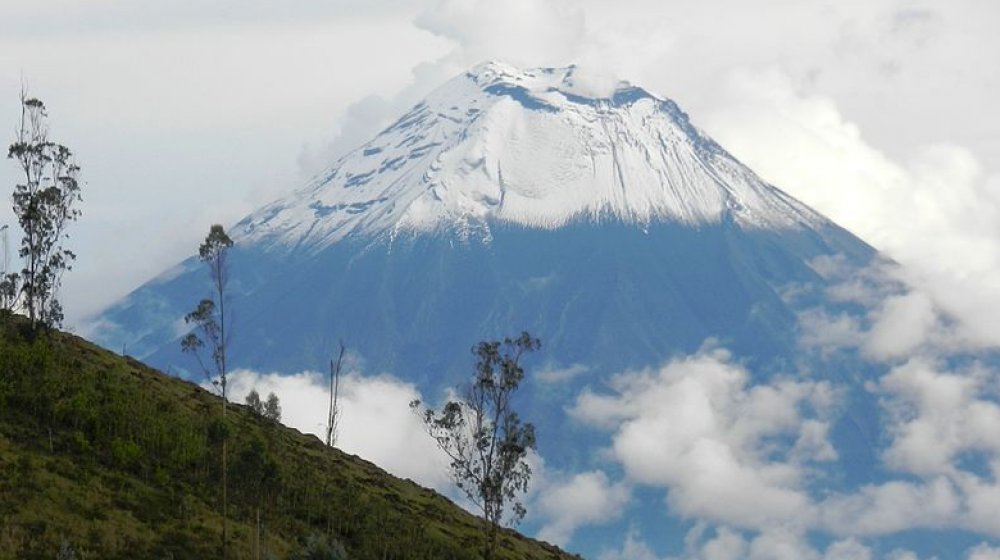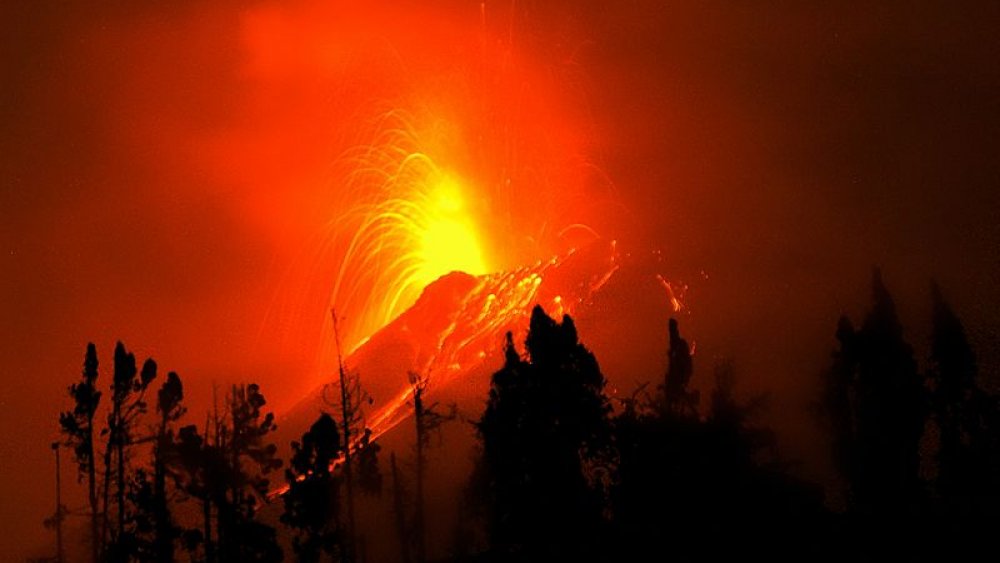Ecuador's 'Black Giant' Volcano Showing Signs Of Collapse
Just in case you were looking for one more reason to fear the awesome might of the volcano, experts say one of South America's most infamous lava-spewing rock piles has been showing signs of imminent collapse. The Tungurahua volcano, known affectionately in Ecuador as "the Black Giant", has researchers concerned that local instability around the volcano's sides could result in a landslide of epic proportions.
The research team, led by Camborne School of Mines' Dr. James Hickey, determined that recent seismic activity has contributed to a "rapid deformation" of the volcano's western flank. That's bad news for residents in and around the Black Giant, as a massive collapse would likely mean devastating damage to the surrounding area. Dr. Hickey laid out his ominous prediction in a study published in the journal Earth & Planetary Science Letters, writing, "Using satellite data we have observed very rapid deformation of Tungurahua's west flank, which our research suggests is caused by imbalances between magma being supplied and magma being erupted." In other words, this temperamental mountain has been erupting so much that a magma imbalance has weakened its walls to the point of collapse. Awesome.
The Black Giant is a volcano with a long rap sheet
In the native tongue of the indigenous Quechua people, Tungurahua literally translates to "throat of fire." The volcano is located in the Ecuadorian Andes, where it's been causing trouble for residents since at least the Neolithic Age. In recent years, however, it's stepped up its game. The Black Giant erupted in 1999, causing the emergency evacuation of 25,000 residents from nearby communities. In the intervening 20 years since that event, Tungurahua has experienced frequent smaller eruptions, the cumulative effect of which likely caused the flank instability that researchers observed.
This wouldn't be the first landslide around Tungurahua, either. Although recent decades have certainly been volatile, Tungurahua's bad temper is nothing new. About 3,000 years ago, a previous volcanic eruption also caused a partial flank collapse on the west side of the volcano. This collapse belched all kinds of debris — rock, soil, snow, and water — across 30 square miles of the Andes and left a massive scar. If recent satellite observations are correct, that ancient scar may be destined for a twin.

